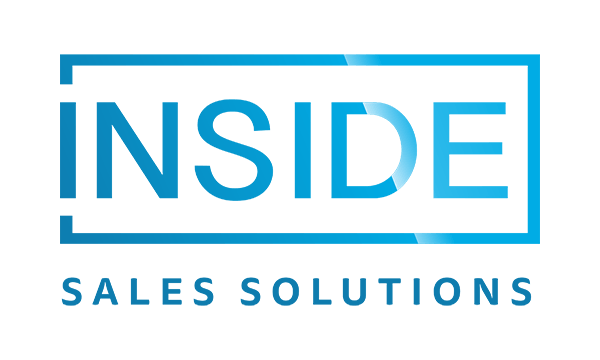Whether you’re an experienced revenue leader or in the early stages of launching your first channel partner program, you know this: sales is about access. That is, access to customers, partners, products, services, and growth.
Channel partner programs are about exponential access.
Your reach and results are amplified through new markets and increased mobility.
Effectively executed, channel partner programs can accelerate your company’s lead generation and long-term growth. The problem is that building a channel partner program (then launching and scaling it) can be complex. From strategy and structure to training and growth, there are many moving parts and people to consider. Thankfully, there are best practices and powerfully simple actions to take as a busy sales leader or channel partner program manager.
Let’s explore some actionable steps so you can learn how to build a channel partner program, then launch and scale it successfully:
• Define Your Strategy and Structure
• Recruit Your Channel Partners
• Train Your Channel Partners
• Manage Your Channel Partner Relationships
• Measure Your Channel Partner Program
• Scale Your Channel Partner Program
Get the Ultimate Guide to Maximizing Channel Sales
Define Your Strategy and Structure
Before you begin the journey, you must plan the vector, velocity, and vehicle.
Start with your goals. Decide where this program needs to go.
Why are you building a channel partner program? What area of the business is this program intended to grow? How much sales revenue can this channel partner program add to your budget? Answer these questions, then back the answers into a clear strategy and structure.
There are three common channel partner program strategies to review:
1. Brokerage Channel Strategy
This channel strategy simply involves selling through a representative, typically referred to as an agent or broker. Brokerage channel strategies are most often compared to the relationship between insurance agents and insurance companies. Ideal for simpler products, your brokerage channel partner is likely forming a bundle of solutions for their customers’ unique needs, of which your product is a key component.
2. VAR Channel Strategy
Bundled with added features, services, and integrations, value-added resellers (VARs) are the “turnkey” solution for customers. VARs are a high-touch approach, providing:
• Software customization for the customer
• Customer invoicing
• Customer support
As you would expect, VARs are most common among expensive and complex SaaS products. And when your product or service is sold through a VAR, you’ll most likely receive a royalty or licensing fee.
3. Consultant/Developer Channel Strategy
Like a VAR, the consultant/developer channel strategy involves the channel partner selling, customizing, and servicing your solution to its network. The difference between VARs and consultants/developers is that they don’t technically resell your product. In this type of partner strategy, your company will still invoice and support the customers.
A key part of your channel strategy and structure will be partner enablement.
Partner enablement, which is also discussed in later sections, is the process of supporting your partners with the training and information needed to sell your solution. As you set your channel partner program’s strategy and structure, consider the tactical items that must be done:
• Add a channel partner page to your website.
• Create your partner content strategy.
• Establish a library of sales enablement resources for partners to use, like sell-sheets and case studies.
• Provide your partners with talk tracks and win-loss data.
• Send your partners a product demo recording if applicable.
Recruit Your Channel Partners
A successful channel partner program starts by recruiting the right channel partners. As you would with customers, start the identification process by creating an ideal partner profile.
On your ideal partner profile, consider attributes like:
• Company size
• Market position
• How many and which vertical markets they serve
• Existing customer relations
• Product portfolio relevance and alignment
• Commitment to partnering
• Overall company growth strategy
Mirroring your approach to customer conversations, your channel promotion efforts should be focused on their outcome as a result of the partnership. Both parties provide value as either a reseller or solution, but each should clearly understand the value of starting and maintaining a relationship with one another.
Onboarding Your Channel Partners
Before your channel partner program begins moving, your channel partners need to understand your company’s standards and expectations. No different than onboarding a new sales team member, channel partners are going to be representing your company in the marketplace and should be led accordingly.
Start the onboarding process by finalizing the partner agreement. Together, discuss the expectations you have of each other and confirm the financial details of your partnership are solid. Document this channel partner agreement and ensure all parties can access it anytime.
Make sure your channel partners are set up for success when they start selling your solutions.
Consider these tips for channel partner onboarding:
1. Tailor Your Onboarding to Your Partners’ Needs
2. Integrate Channel Partner Training with In-House Training
3. Invest in On-Demand Onboarding and Training Resources
4. Train Channel Partners on Customer Service Standards
5. Keep your Channel Partner Training Up-to-Date
6. Create a Brand and Messaging Guide for Channel Partners
Manage Your Channel Partner Relationships
The ongoing extension of your channel partner training is a system called Partner Relationship Management (PRM).
PRM addresses everything involved in managing your channel program partners – structuring partnerships, implementing a sales model, recruiting, empowering, motivating, and measuring your channel partners. From manual activity systems to more sophisticated PRM software, your channel partner program depends on successful:
• Lifecycle Management
• Contracting
• Enablement
• Engagement
• Business Planning
• Transactions
• Offers
• Incentives and Rewards
• Marketing
• Support
• Performance Management
Measure Your Channel Partner Program
What does success look like?
This is a familiar question among sales leaders, and it’s one that must be answered by your channel sales team too. Importantly, channel partner program success metrics should be agreed on by both the OEM and channel partner and they should tie into the goals you set at the beginning of launching your program.
Let’s look at the main success metrics living in two buckets: revenue/profitability and opportunity:
Revenue and Profitability Metrics
• Total channel program revenue across all channel partners
• Channel program profitability (i.e. program cost to revenue ratio)
• Revenue by channel partner, product, geography, reporting period, and campaign
• Profitability by channel partner
Opportunity Metrics
• Number of leads by channel partner
• Value of the leads they generate
• The number of leads closed vs leads generated
• The time it takes each channel partner to act on a lead
• The time it takes for a channel partner to convert a lead into a sale
Scale Your Channel Partner Program
“Scale” is the ultimate stage for sales leaders and channel partner program managers.
It’s also just the beginning.
You have laid the foundation and assembled the framing for your channel partner program. Now, it’s time to establish a system for sustainable growth and profitability. Here are some key points to be mindful of:
• Know your organization’s current resources.
• What personnel do you have dedicated to channel sales?
• What departments are you borrowing resources from (marketing, operations, customer success, etc.)?
• Stay true to the process you’ve implemented but be willing to adapt and adjust as you scale.
• Leverage current partners as success stories and blueprints for new partner recruitment and future growth.
• Forecast current and future staffing needs in relation to your strategic business objectives.
While the creation and management may be complex, your channel partner program’s purpose is simple: to acquire and delight more customers. Every detail matters, but the first step in creating your channel partner program is to take a distilled view of the journey.
With the right pieces in place, creating your channel partner program can go from complex to crystal-clear.
And once it’s clear, you’re ready to benefit from the best part of channel sales: exponential access.
Considering Outsourced Sales Development?
Don't make your decision until you read our guide to creating a successful partnership for growth.


